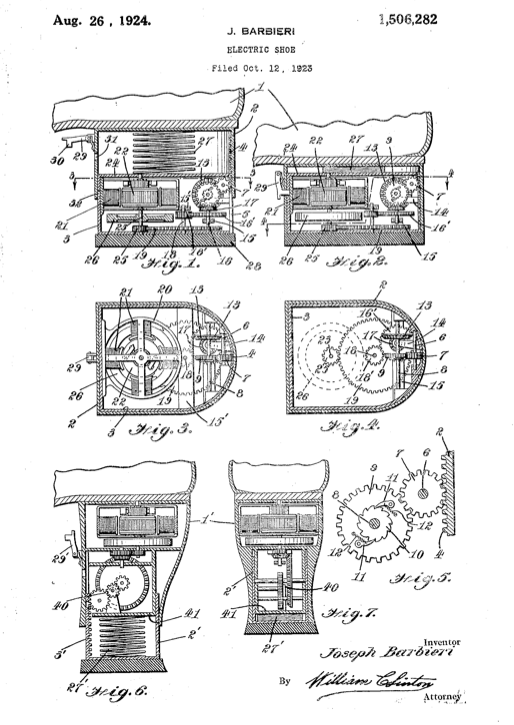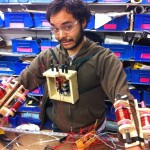Jump to: Research | Kinetic | Solar Back to: Main page | 2019 weekly syllabus
Research Topics
Due: Weeks 11 (April 18) and 12 (April 25), Groups based on topic
We’ll collectively identify four areas of interest for a deeper research and discussion. You’ll form groups based on those topics at the start of the semester, and present research in Weeks 10 and 11. To start things off, I propose the topics below, but lets discuss in class and alter one or more based on your collective interests if necessary.
Climate Change Solutions: Think big – a global challenge demands big solutions. Carbon capture? Geo-engineering? Etc.
Embodied Energy: How much energy is embodied in the things we make?
Food and Water: Perhaps this subset of embodied energy could be a topic of its own.
Electrify Everything: This (along with decarbonize electricity, below) is the mantra of our time – what does that look like?
Decarbonize Electricity: As vast sectors like transportation electrify, what sources of zero-carbon electricity scale? Consider technologies beyond current PV and wind.
You can decide how coordinated you’d like your group to be, but all research should be compiled into a single presentation, and you should share in presenting your topic. Remember to:
- Cite sources.
- Place energy and power numbers in perspective, using the SI units we use in class, and
- Document your topic to serve as a class reference.
Kinetic
The course begins with a three-week kinetic challenge: turn motion into light.
Due: Week 4, February 21, Groups of 2-3 (assigned in class)
Background
US patent number 1506282 begins like this:
“Be it known that I, Joseph Barbieri, a subject of the King of Italy, residing at St. Vincent de Paul, Province of Quebec, Canada, have invented certain new and useful Improvements in Electric Shoes…
The present invention pertains to an electric shoe designed to generate a current while the wearer is walking. The primary object of the invention is the provision of a device of this character carrying a small generator and driving means, whereby current may be generated and used for various purposes on the body of the wearer. The current generated may be employed to operate such a device as an electric lamp, a heating coil, a small wireless outfit, a therapeutic appliance* or the like.”

The patent was filed October 12, 1923.
One thing that amazes me about this patent is that in 1923 the category of “Electric Shoes” was widely-enough known to be mentioned without further explanation. Other patents from around that time detail “*Galvanic Shoes” with embedded batteries for gently shocking the feet as a form of patent medicine. But the Rural Electrification Administration was still more than a decade away and large swaths of the US had never even seen electricity.
Also surprising is that although the electricity generating shoe is almost 100 years old (at least!), it is continuously “reinvented”. Just about every year you can find a headline about the so-called invention of the shoe generator. As an idea, it’s a hot zombie: good looking at first glance, gross up close, and unkillable.
The zombie does mutate though. If we expand the idea from “shoe-generator” to “person-powered generator” we can find a similar history of perennial reinventions. Today we have a few pretty humble products that tap human muscles for electricity – think the Eton emergency radios and the like. – along with a swarm of Kickstarter-esque product concepts that combine what is, in almost all cases, exactly the same technology as a humble shake light or crank radio, with slick design and big promises. The creators are either unaware of basic energy concepts, or hope you are. See for just one example here.
To paraphrase Fermi – where is everyone? We seem to want people-powered generators, and we have scores of examples of people inventing them, so where are they? I’m not wearing one (usually). Are you?
Blame Nick Holonyak and Monsanto. Holonyak invented the first visible LED; Monsanto (with TI) commercialized the first ones cheap enough to go everywhere. Human bodies have stayed the same for millennia (mine’s gotten worse), but LEDs, since their invention in 1962, have been getting more and more efficient (Koomey’s law is more consistent than Moore’s).
So much so that it’s trivial to light up an LED, and there are many things that can do it. Many well-meaning amateur inventors seem to have been fooled into thinking their momentary LED flash is of greater significance than it really is; other groups, perhaps more professional but less scrupulous, seem to use the ease of getting an LED to light up (or the more modern equivalent – getting a phone to indicate it is charging) to fool the public into thinking their tech has promise.
The gulf between getting an LED to flash for a millisecond and building a product that consistently generates a meaningful amount of electricity and competes with every other alternative for getting that electricity hasn’t happened yet. It might never: when properly considered, “human power” starts with sunlight, which is converted to food by plants, eaten, digested, transformed to ATP for powering muscles, turned by muscles into movement, from movement into electricity, which then powers a chemical reaction in a secondary battery (or maybe a capacitor), which then, finally, runs in reverse to reproduce electricity to power some device that we actually want to use. It’s a long, complicated process with losses at each step, and at the end of the day it is taxing, imposing a charge on our bodies to pay for the use of our devices. A lot of human ingenuity has focused on removing humans from needing to directly power anything.
So having established that human powered electronics are problematic, and that lighting up LEDs is misleadingly easy to do… Let’s do exactly that!
Rationale
There are several reasons to become a human generator (although ‘generate lots of electricity’ is not on the list): first, it is one of the best ways I can think of to improve your understanding of how energy fundamentally feels, and along the way gain intuition about electricity and mechanisms. No one has any intuitive sense of power and energy figures. What is a watt? What is a joule? (This is partly why so many fraudulent or questionable energy innovations can exist!) By putting your bodies to work, and measuring the results, you’ll ground your understanding of energy to a concrete experience.
You’ll also confront, in miniature, all the challenges that would face just about any energy project with a kinetic component, from micro-hydro turbines to megawatt-class wind turbines to gigawatt-class nuclear (thermal) power plants. Electromagnetic induction is a step in the way virtually all of our electricity is generated.
Also, while the energy reasonably available from a human is small, what can be done with that energy is rapidly expanding. Our phones – super computers of a previous generation – run at about 1 watt, or 1/100th the power of a human body; sensors shrink and as they do take permanent place in our infrastructure and on our bodies; LEDs squeeze more illumination from less energy every year. As our technology becomes more ephemeral, previously impractical energy sources become interesting.
Finally – it’s pretty fun!
Background reading
- Paradiso, Starner, “Human Generated Power for Mobile Electronics.” This paper provides upper bounds for the energy available to body-worn devices in general terms using basic physics.
- IEEE “Turning sweat into watts” (available online through Bobst, or email me for the pdf). IEEE has periodically addressed the idea of using humans as generators.
- Harvard Business Review, “The Power of Unwitting Crowds“
Case study: Gravity Light

Gravity Light makes a muscle powered light designed to replace dirty kerosene lamps in developing parts of the world where those are common. They stand apart from many similar efforts in important ways: They make no extraordinary claims, nor do they avoid giving specific performance details for their product. The parent company is called “Deciwatt” after all, and the logo even reminds the non-technical that they’re working with less than one watt (The “ci” is written “<1”). Their product recruits large muscle groups and uses ambient material (dirt) to store energy, reducing the electrical complexity of their design. They’ve correctly identified the actual challenge of what they’re trying to do – manufacturing a rugged physical device cheaply and locally in the community it is designed for. They may not succeed, but they’re avoiding many mistakes that plague other projects.
Like GravityLight, your projects will be open and accurate about their energy specifics. Use the Paradiso/Starner reading and the lecture notes to make first order approximations of the energy available to you. Are you using your body weight to descend a certain distance and capturing that energy? There’s a physics for that! Target large muscle groups like legs and back over small ones like finger tips and wrists. Consider the mechanics of what you’ll need to do: do you need leverage or a gear change to match your physical input to your electrical output? Audition potential generators (steppers, DC motors) and assess them for open circuit voltage and short circuit current. Eliminate electrical storage if possible; otherwise, use capacitors this round (batteries will be covered int he next section). Consider the luminous efficacy (lumens/watt) of your light source or the sensitivity (dB/watt/m) of your sound output.
Solar
The second exercise in this course is: power computation with light.
Due: Hardware demo Week 7, March 14th. Check-in again after Spring Break, Week 8, March 28
Groups of 2-3 (choose your own)
LEDs are forgiving loads – they can turn just a few electrons into pleasing photons, and they’re cheap enough that if you break them it’s no huge loss. Powering them with a kinetic source – especially a human-powered generator – provides abundant electricity with easy-to-find parts and puts you in control of the energy. Need more? Crank harder.
For this assignment both the source and the load become more complex. For the source, we’ll use solar, or more specifically, photovoltaics – materials that turn light into electricity.
Unlike the kinetic brief, there’s nothing to debunk here. Solar is important because the planet as a whole (with or without the US) is undertaking the twin projects: electrify everything, and decarbonize electricity. Solar is not new -one of Einstein’s early papers on the photoelectric effect laid the foundations for quantum mechanics. It’s a mature technology that has tipped the scale in the last few years to compete on cost alone with legacy sources of energy.
But solar has two things working against it. It’s diffuse (compared to the energy demands of modern life) and it’s non-dispatchable. We can seek out sunlight, but if it’s not sunny, we’re stuck. So we either need to: 1) create a system that gracefully handles intermittent energy, and/or 2) add some kind of storage, which allows us to take a fluctuating input and provide a steady output.
For that application, I’ve merely specified “computation”. I leave this to you to define as creatively or straightforwardly as you like, but at a minimum this is a higher bar than merely powering a passive load like an LED. You’ll have to provide a stable basis for a something to power up and run code you write. You’ll need to consider the power implications of any sensors, outputs, or networking you add to your project. And above all, you’ll need to try to live with – to really use – the device you create. Document your project in situ, because it will be difficult to demo them in-doors. In week 8 you’ll present the project and the documentation.
Variation: BEAM

You’re free to power any computation you’d like. However, there are two variants to this assignment I’d like to mention. The first is BEAM robotics. This is a somewhat under-explored area that I find interesting. It tends more towards craft – repeating recipes – than engineering. However, many of those recipes are interesting and ready, I think, to be scaled up for use in more creative technology projects.
In particular, the class of circuits called “Solar Engines” would qualify as performing a kind of minimum computation that satisfies this assignment, and is well-suited to matching small solar to motor loads. Depending on student interest I’ll work material about BEAM into the syllabus or work with a group outside of the regular class time.
Variation: Rooftop Solar
ITP has a solar panel(!), and several past students have recently done excellent work logging the output of the panel, repairing the battery storage, and putting performance data online. Anyone interested in working on this may do so for this assignment, or for their final. See here: https://itp.nyu.edu/classes/itpower/sunpower/



